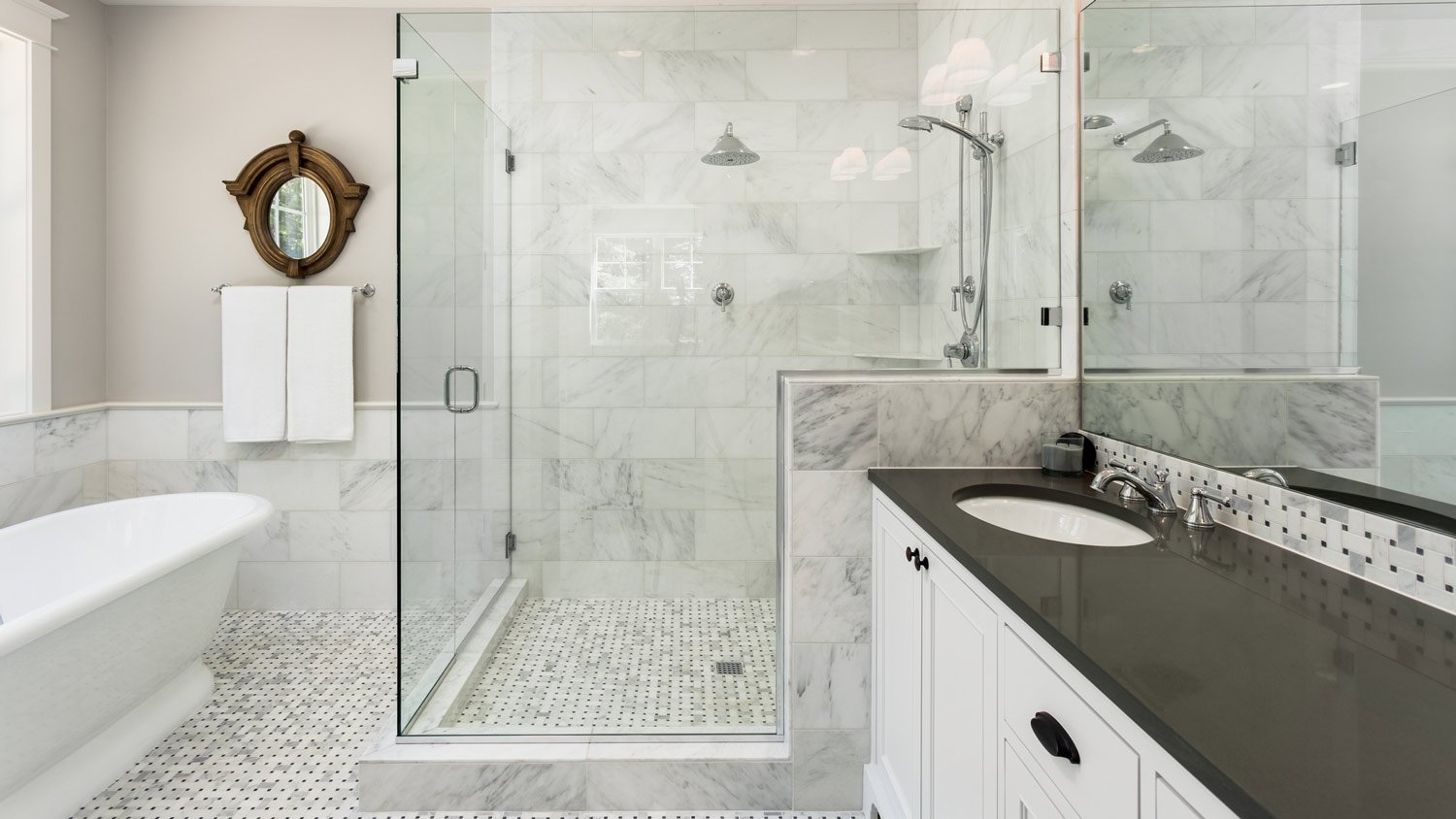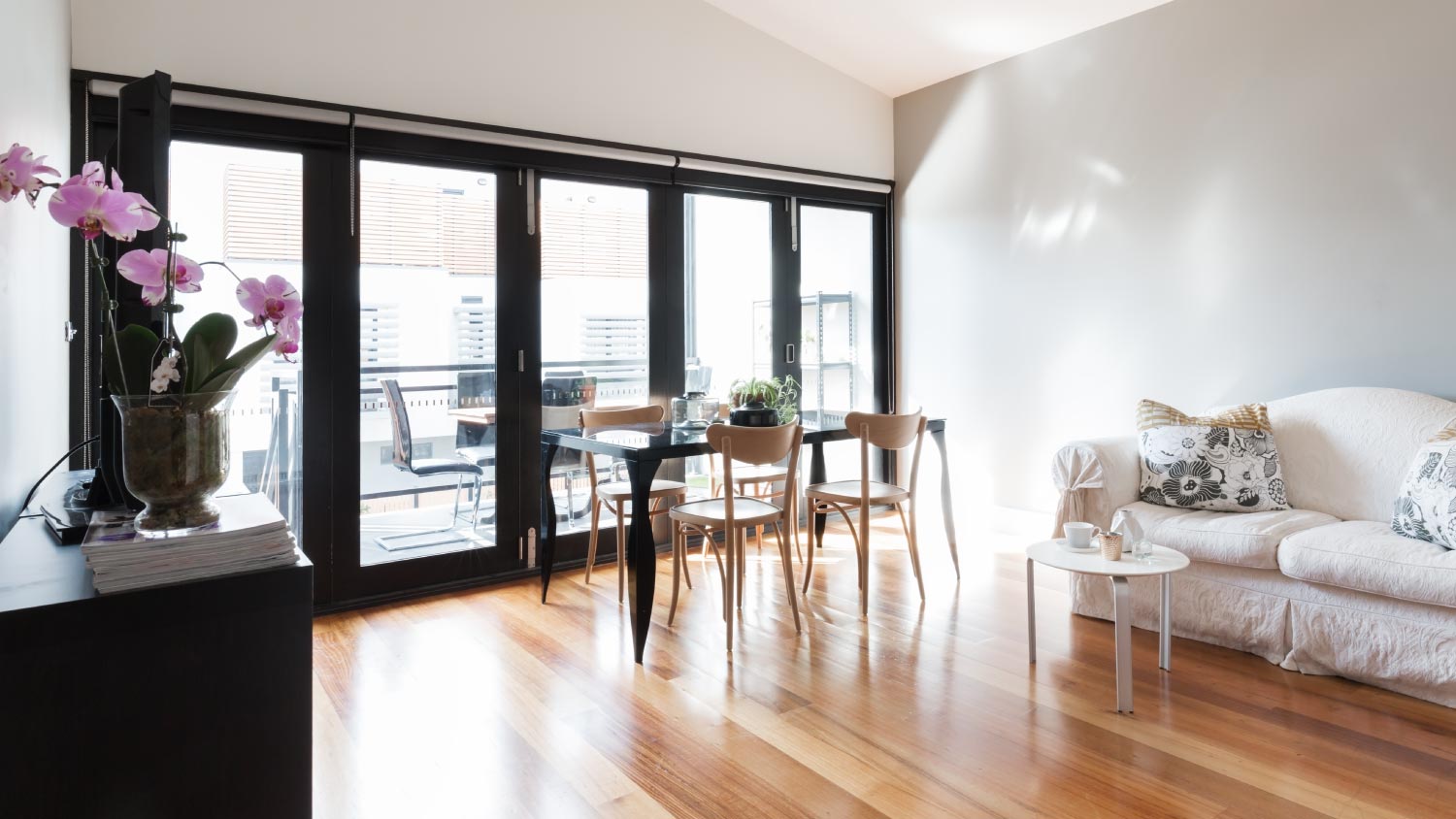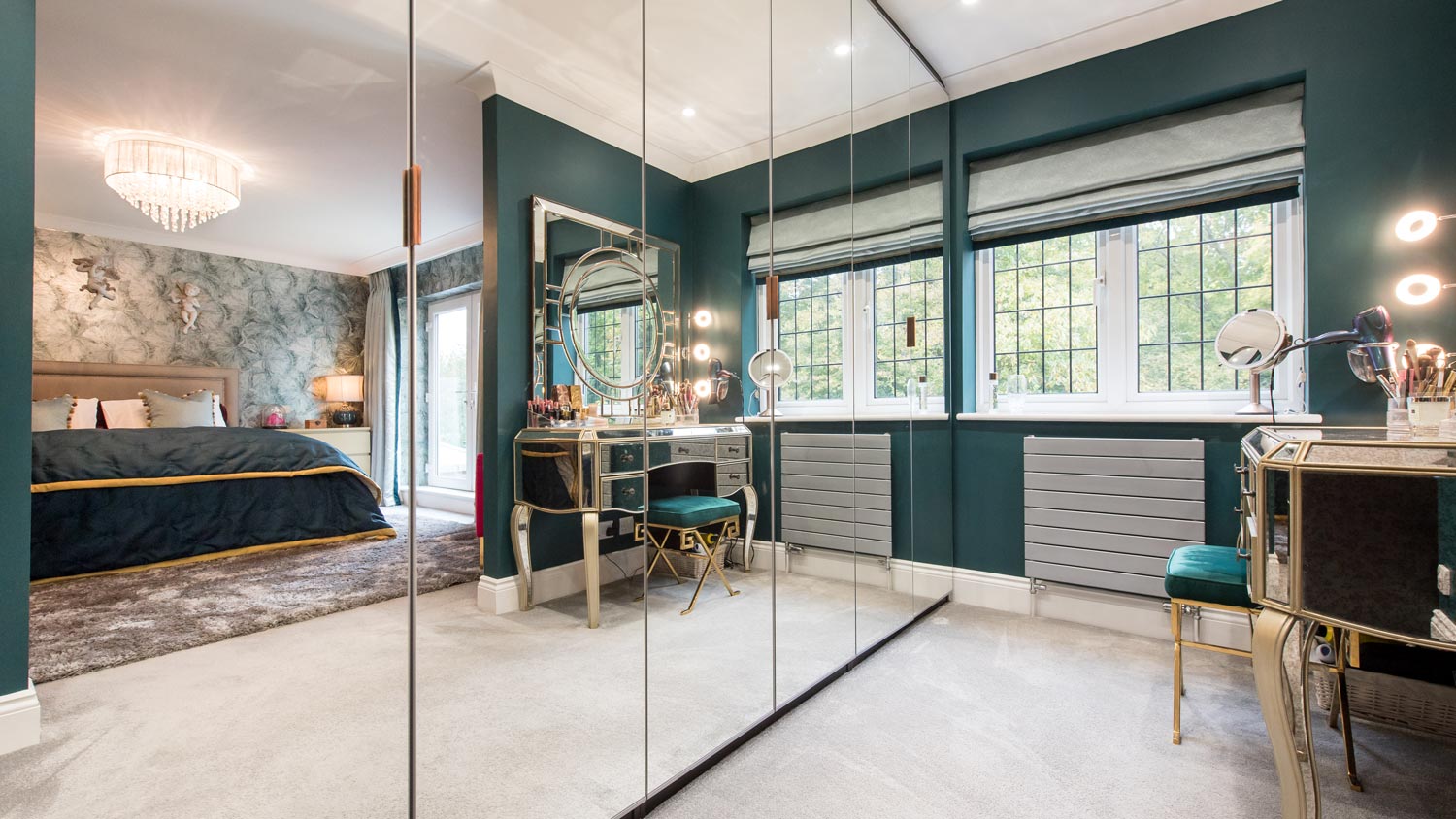
Discover the average shower door installation cost, including labor and materials, plus tips to save on your bathroom upgrade.
Glass wall cost averages $5,000, but homeowners may spend between $1,000 and $35,000 depending on size, type, and materials


Glass wall costs depend on size, glass type, and frame materials.
Glass walls offer modern style and maximize natural light.
Custom designs and added features increase the total glass wall cost.
Professional installation ensures safety and long-term durability.
Glass walls can boost home value and energy efficiency.
This article was created using automation technology and thoroughly fact-checked and edited by an Angi Editor in accordance with our AI policy.
Glass wall cost averages $5,000, with most homeowners paying between $1,500 and $18,000 on average. Prices range from $11 to $300 per square foot, depending on size, style, and materials. Understanding these factors helps you budget for your glass wall project.

The size of your glass wall is one of the biggest factors affecting total cost. Taller and wider walls require more materials and labor, which increases the price. Residential glass walls can range from small room dividers to full-length exterior walls that span entire rooms or facades. Smaller partitions will cost much less than expansive exterior installations. Most glass wall systems have minimum and maximum size limits based on structural requirements and manufacturer specifications.
| Type | Dimensions (Ft.) | Average Cost | Cost Range |
|---|---|---|---|
| Interior partition | 6x8 | $3,000 | $2,000–$6,000 |
| Room divider | 10x8 | $6,500 | $4,000–$10,000 |
| Exterior glass wall | 12x10 | $14,000 | $8,000–$25,000 |
| Sliding glass wall | 16x8 | $16,000 | $10,000–$30,000 |
| Folding (accordion) | 18x8 | $19,000 | $12,000–$35,000 |
The type of glass wall you choose has a direct impact on cost, appearance, and function. Fixed glass wall panels are the most affordable, while sliding and folding systems add versatility but cost more due to their complex hardware and installation.
Frameless glass walls provide a sleek, contemporary look but require thicker glass and precise installation, increasing the price. Curtain walls, common in commercial settings, may also be used in homes with a premium price tag. Custom glass wall systems, whether for unique shapes or finishes, always cost more than standard options.
| Type | Description | Average Cost per Sq. Ft. | Pros | Cons |
|---|---|---|---|---|
| Fixed panel | Non-moving glass sections | $11–$60 | Simple, cost-effective | No ventilation or access |
| Sliding | Panels slide open/closed | $110–$180 | Space-saving, easy access | Higher hardware cost |
| Folding (accordion) | Panels fold/stack to open | $90–$200 | Wide openings, dramatic effect | Complex install, higher cost |
| Frameless | Minimal visible framing | $90–$150 | Modern look, unobstructed view | Expensive, needs thick glass |
| Curtain wall | Large, multi-panel system | $25–$80 | Striking design, lots of light | Best for custom/commercial |
| Custom | Tailored to unique specs | $300+ | Fully personalized | Long lead time, highest cost |
Where you live and where you plan to install your glass wall both affect the total project price. Labor and material costs are higher in urban areas and high-cost states, while rural areas may offer lower rates but less selection.
For in-home location, interior glass walls cost less than exterior ones, which require weatherproofing and structural support. Installing on upper floors or in hard-to-reach spaces can add to the cost, especially if heavy lifting equipment or scaffolding is needed. Integrating a glass wall into a load-bearing structure is also more expensive due to the need for structural modifications.

Let’s break down the main factors that influence the total glass wall cost, from labor and permits to special features and project complexity.
Professional installation is key for safety and performance. Glaziers, general contractors, and framers each charge $50 to $150 per hour, and labor makes up 25% to 40% of the total glass wall cost. Rates are higher in large cities and areas with strong demand. Custom work, structural modifications, or challenging site conditions will increase labor hours and fees.
In most cases, you’ll need a permit, especially for exterior glass walls or any structural changes. Permit fees range from $200 to $1,000, depending on your location and project scope. Some municipalities require inspections, which can add $100 to $300 to the total. Permit costs are a necessary part of your glass wall cost and ensure your project meets code and safety requirements.
Optional features can add function and style but will increase your total cost. Specialty glass, such as tempered, laminated, insulated, low-E, frosted, or tinted, costs more than standard clear glass. Integrated blinds or shades, smart glass that switches from clear to opaque, decorative hardware, and custom finishes all boost the price. Soundproofing and energy-efficient upgrades are popular for bedrooms or exterior walls and come with additional material and labor fees.
The complexity of your project matters. Removing existing walls, reinforcing supports, or working around HVAC, electrical, or plumbing systems increases the total cost. Custom shapes, angles, or curved glass require skilled fabrication and installation. After construction, cleanup, debris removal, and design or architectural fees can add to your final bill, as can required post-installation inspections.
Beyond installation, several ongoing or one-time costs can impact your glass wall investment.
Most manufacturers and installers offer warranties. Manufacturer warranties cover glass defects for 10 to 20 years, while installer warranties may range from 1 to 5 years for labor. More comprehensive or extended warranties can add to your glass wall cost but provide peace of mind.
Glass walls can affect your energy bills. High-performance glass, like insulated or low-E panes, can reduce heating and cooling costs over time. However, large glass surfaces may increase energy use if not properly selected or installed.
Glass walls require regular cleaning with non-abrasive products. Plan to inspect and reseal joints or caulk annually, and maintain hardware as needed. Annual maintenance costs range from $100 to $300, depending on wall size and features.
Sales tax applies to materials and installation in most states. Adding a glass wall may also increase your property’s assessed value, leading to a potential property tax increase. It’s wise to check with your local tax assessor for details.
Adding a glass wall can impact your homeowner’s insurance premiums. Some policies require extra coverage for high-value glass installations or breakage. Make sure your insurance covers accidental damage or severe weather events that could affect your new glass wall.
Some homeowners consider installing a glass wall themselves to save on labor, but you’ll need specialized tools, safety equipment, and advanced skills. Hiring a professional glass contractor adds labor costs but ensures code compliance, safety, and a high-quality finish. DIY projects can be risky—mistakes may lead to leaks, structural issues, or even injury. Complex or exterior glass wall installations are best left to experienced pros.
Sometimes, repairing a glass wall is possible and more affordable than replacement. Common repairs include fixing cracks, resealing joints, or replacing hardware, which can cost a few hundred to a few thousand dollars. If the glass is severely damaged, the system is outdated, or repairs exceed 50% of the replacement cost, full replacement is more cost-effective. Always check your warranty—some repairs may be covered, reducing your out-of-pocket expense.
| Type | Repair Cost | Replacement Cost |
|---|---|---|
| Minor crack repair | $250 | $4,000 |
| Hardware repair | $400 | $9,500 |
| Seal replacement | $600 | $14,000 |
| Panel replacement | $2,500 | $16,000 |
Installing a glass wall can deliver a strong return on investment. Many homeowners see a 50% to 80% ROI, especially when glass walls enhance open layouts or maximize light in living areas.
This upgrade boosts curb appeal and makes homes more attractive to buyers. Compared to other improvements, glass walls offer a unique blend of aesthetics, energy efficiency, and universal design. The actual ROI depends on safety, efficiency, and how well the design fits your home’s style.
Streamline your budget and maximize your investment with these cost-saving tips for glass walls:
Get multiple quotes from qualified glass wall installers.
Choose standard sizes and configurations over custom designs.
Opt for cost-effective glass and frame materials.
Schedule installation during off-peak seasons for potential savings.
Handle demolition or site prep yourself if safe and feasible.
Limit specialty features to essentials to control glass wall cost.
Home is the most important place on earth, which is why Angi has helped more than 150 million homeowners transform their houses into homes they adore. To help homeowners with their next project, Angi provides readers with the most accurate cost data and upholds strict editorial standards. We extensively research project costs to develop the pricing data you see, so you can make the best decisions for you and your home. We rely on reputable sources, including the U.S. Bureau of Labor Statistics, academic journals, market studies, and interviews with industry experts—all to ensure our prices reflect real-world projects.
Want to help us improve our cost data? Send us a recent project quote to [email protected]. Quotes and personal information will not be shared publicly.
From average costs to expert advice, get all the answers you need to get your job done.

Discover the average shower door installation cost, including labor and materials, plus tips to save on your bathroom upgrade.

Discover the cost to install a custom-cut mirror in your home. Discover price factors, installation options, and expert tips to save on your custom mirror project.

Whether you're remodeling a previously owned home to suit your tastes or updating your own previous renovations, removing mirrors glued to a wall can be an important part of personalizing your home to match your aesthetic.

Discover average wall mirror installation costs. Learn about price factors, labor rates, and ways to save on your wall mirror project.

Learn how to hang a heavy mirror securely with this easy 4-step guide. We’ll walk you through all the tips you need to ensure your mirror is safely installed.

Discover frameless shower door costs, including average prices, installation factors, and ways to save on your bathroom upgrade.